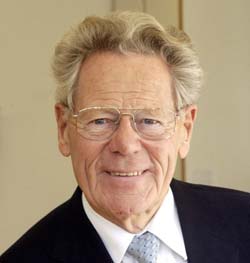|
|
Day 3, May 3, 2017 The entire day today has been dedicated to learning about and visiting the Church of the Holy Sepulcher, also known as the Church of the Resurrection. It is reasonably well documented that this is the place where Jesus died and was buried. Nothing represents the divisiveness within Christianity more than this Church. One would expect the central shrine of Christendom to stand out in majestic isolation but anonymous buildings cling to it like barnacles. Outside in the courtyard (Pic 1), it is light. But inside, where one would look for numerous light, it is dark and cramped. One would hope for peace but the ear is assailed by a cacophony of warring chants. One would desire holiness only to encounter a jealous possessiveness. There are six groups who occupy the Church – Roman Catholic, Greek Orthodox, Armenians, Syrians, Copts, and Ethiopians. If this isn’t enough, yet a representative of another religion is the keeper of the keys to the Church and proudly open the doors each morning and locks them each night. Would you believe this honor is held by a Muslim? They all watch one another suspiciously for any infringement of rights. The frailty of humanity is nowhere more apparent than here. My experience in being in this Church today was unsettling – kind of what it must have been like for Jesus to see the money changers in the temple. In my new understanding of all of this, I learned that it was Queen Helena, the mother of Constantine, who first made the discovery of the cross on which Jesus died. Not far from there the tomb was discovered – all of this in the 4th century. As I mentioned earlier, the new Jerusalem is built in top of the ancient Jerusalem. The Church, built over the actual place where Jesus died, is mammoth in size. The atrium is over the place where the cross was discovered. The basilica is over what was then Golgatha. And the Rotunda is over the tomb where Jesus was buried. The line to get to the tomb of Jesus was endless midday. Tomorrow we’re leaving here at 5:30 to walk the way of the Cross and cover the fourteen stations. Then we’ll go back to the Church and, at that early hour, visit Jesus’ tomb where he was buried and from where he was resurrected. As the day is dawning, I hope to experience more serenity in the Church that represents the deepest aspect of our faith. Many have tried to take a piece of Calvary home with them by chiseling off a piece of the rock. So now, the rock is encased in glass (Pic 2) At the vigil service on the eve of Easter, Christians gather with torches lit to honor the resurrection of Jesus. We pilgrims reenacted this among ourselves. (Pic 3) In the afternoon, we visited the Armenian Church of St. Mark which is built over what we know as the “Upper Room” where Jesus had the last supper with his disciples. We listened to an Armenian woman share stories of the miracles that she claims to have personally experienced or witnessed in this setting. Remember that the Jerusalem that Jesus walked was underneath the new Jerusalem, so we walked downstairs to get to the Upper Room (Pic 4). It would have been meaningful if we could have had our meal there but we walked a block away for our midday breaking of bread. This evening our speaker was an Arab Palestinian Muslim. He identified himself in that order: first an Arab, secondly a Palestinian, and lastly a Muslim. He spoke of many of the issues facing his people today. He discussed the concern about Muslims in the world and pointed out the obvious: extremism in any religion is a bad thing and needs to be curtailed. He felt Muslims in America are more assimilated into society than those in Europe. In Europe far more than America, if you’re not “pure bread European,” you’re treated as an outsider. In America, we’re all immigrants. He referred to the brainwashing of the young Saudi Arabian Muslims who were recruited to fly the planes into the Twin Towers. Regarding the Palestinian Israeli situation, he said that he has never been in favor of a two-state solution. I was stunned to hear a Palestinian say this. But he said there was little hope in the world if the Palestinian people and the Jewish people could not learn to get along. He suggested that each of us raise this million-dollar question to our Congressional leaders: What would happen to non-Jews residing in an all Jewish state? Would they need passports to get into their own country? Or is it possible for both Jews and non-Jews to share equal rights in their own home country? He closed his talk by saying: “Israel is my home and always will be. I have no reason to want to leave my own country.” |






